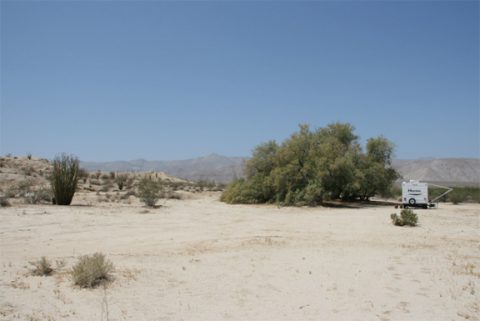
Have you ever wondered why God put certain things in the Bible? Moses physically wrote the stories found in Genesis, but the Bible tells us that “all scripture was given by God”, and so ultimately what’s in the Bible is what God wanted there regardless of who actually wrote it. This means that there is a reason for every little thing to be in there, but why is it there, and why aren’t we given the whole story when it is?
For example, it seemed quite odd to me that the Bible tells us that Abraham planted a tree. Really? Don’t most people plant a tree at some point during their life? It goes on to say that it was a very specific type of tree, a “tamarisk tree”, and then that’s it. Why tell us anything if it’s not going to explain? Of course, part of the answer to these questions is that God wants us to dig deeper and understand His ways, and if we ask Him for help, He will guide us to better understanding.
“Abraham planted a tamarisk tree in Beersheba, and there he called on the name of the Lord, the Eternal God.”

I didn’t even know what a Tamarisk tree was, so I had to go look it up. I found several surprising and very interesting attributes about these trees. (Please note that the Tamarisk Tree is NOT the same as the Tamarack Tree.)
They are sometimes called Salt Cedar or Saltcedar trees. (In the wrong location these trees are considered invasive and very hard to control or kill, but not in the desert.)
A tree in the desert would have provided a nesting habitat for birds and other small animals.
These trees have a taproot that goes very deep in search of water, and horizontal roots that propagate immediately upon finding water. It can survive drought conditions by dropping its leaves and stopping its growth for awhile. It’s perfectly suited for the desert.
-
The Tamarisk can grow 9’-12’ every year if given the right conditions (lots of water and heat). This could have made wood readily available for Abraham’s families. Tamarisk wood can be used as most other wood is used (carpentry, furniture, firewood, etc.). It is soft, white & flexible. It makes very powerful archery bows when combined with ibex horns. If Abraham had extra wood then it could be sold or traded. (http://www.columbia.edu/itc/cerc/danoff-burg/invasion_bio/inv_spp_summ/Tamarix_ramosissima.html)

The most unusual attribute of the Tamarisk tree is that it absorbs salt from the ground and then secretes that salt from its leaves. This salt drops to the ground making the soil below the tree very salty. Salt can be removed from the leaves and also easily extracted from the soil below the tree by picking up this crusty sand and washing it with water to remove the salt, then letting that salty water evaporate leaving only the salt. Abraham’s family and servants needed a source of salt because everyone needs salt to live. Salt is a great food preservative too, and if there was extra salt it could also be sold or traded.
-
Tamarisk trees have an abundance of pink, white or purple flowers that apparently bloom in the late spring and then maybe again later in late summer, depending on the species). This would have been a very welcome sight, especially in a desert area. (I am only guessing, but it seems logical that someone in Abraham’s household would have figured out a way of producing a perfume from all of those flowers.) These flowers would likely have attracted honey bees too.

At certain times of the year, insects feeding upon the tender twigs of tamarisk plants excrete a sweet substance known as honeydew, which has been gathered for use as a food source and sweetener for thousands of years. (https://en.m.wikipedia.org/wiki/Tamarix). Another source tells about this sweetener like this: “A manna is produced by the plants in response to insect damage to the stems. It is sweet and mucilaginous and is used in confectionery.” (https://pfaf.org/User/Plant.aspx?LatinName=Tamarix+ramosissima)
Some species of these insects produce commercially valuable substances including carmine [a bright red pigment] and kermes [a deep red, scarlet and crimson pigment] dyes, and shellac lacquer. (https://en.m.wikipedia.org/wiki/Scale_insect). Abraham‘s household probably produced both bright red and dark red dyes to use and sell. (Who knows, maybe they even produced glues and wood finishes too.)
Another interesting fact is that this tree has many medicinal properties as well. Abraham would have certainly been working to keep his people healthy. The Tamarisk or Salt Cedar is used to deal with health issues such as infections, skin wounds, tooth aches, diarrhea, rheumatism, even liver and spleen disorders. (https://pubmed.ncbi.nlm.nih.gov/31542471/ & https://gardenplants.comparespecies.com/en/about-tamarisk/model-485-999/amp)
Of course, almost all trees produce much needed shade on very hot and sunny days, but because salt absorbs water (especially overnight) the evaporation of that water in the mornings from all of that salt on the leaves and on the ground would have had an additional cooling affect. Abraham and his family probably gathered under that tree every Sabbath to sing and worship God, and maybe to watch as Abraham offered sacrifices every day.
CONCLUSION:
Abraham’s habits seem to focus on bringing honor and attention to God, and being a blessing to those around him. His family and servants probably numbered over 1,000, and it appears that he provided the necessities of life even in a hot and dry desert.
That should be our focus too: bringing honor and attention to our great and mighty God and blessing each of His children as much as possible.
Even the little things in life, like planting a tree, can be a huge blessing to people, and these little things are evidently extremely important to God.

Father God, thank You for telling us that Abraham planted a tree!

